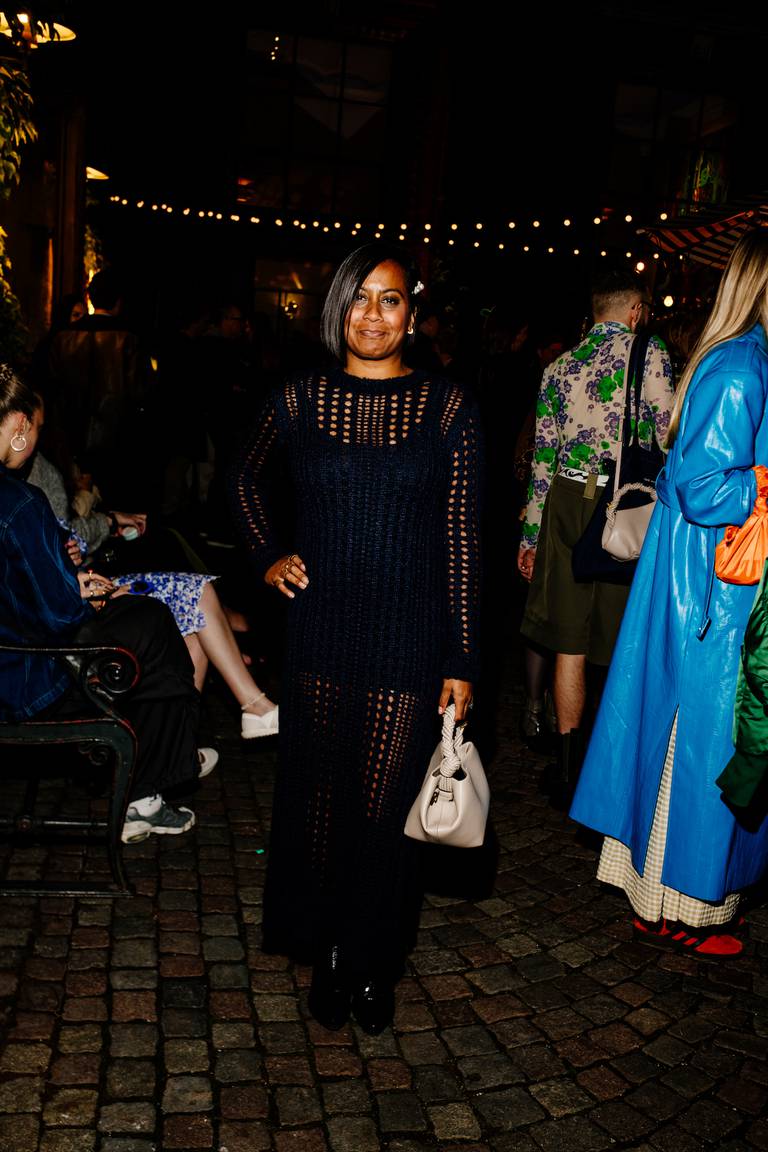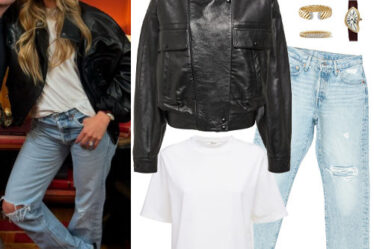
Discover global job opportunities in marketing on BoF Careers today.
Ganni’s chief brand officer, Priya Matadeen, studied psychology at the University of Birmingham before launching her career in marketing. She started out at various creative agencies before landing a job at Spring Studios, where she specialised in fashion and luxury, working for clients including Phillip Lim, Altuzarra and Ferragamo.
In 2015, Matadeen moved into publishing, working at Vice and i-D as general manager at its creative agency Virtue. She then briefly worked at British Vogue before moving into the role of managing director at Dazed Media.
She refers to “the red thread” throughout her career — the thematic connections and transferable skill sets she identified between her jobs and experience across different industries — starting with her degree in psychology.
“Anyone that’s worked in fashion or advertising knows that psychology and navigating people is quite key […] Working with creative people — there’s a lot of intuition and emotional intelligence. Reading those cues and understanding that sensitivity really helped me in my role.”
After more than four years at Dazed, Matadeen joined Ganni as its chief brand officer in January of this year. She also mentors young talent through platforms such as Mentoring Matters and The Outsiders Perspective, and is a non-executive director at the University of the Arts London.
Now, BoF shares key insights and advice from her interview on the BoF Careers series, Building a Career in Fashion.
For the full interview, watch on-demand the LinkedIn Live: Building a Career in Fashion with Priya Matadeen
How did you land your first job?
My first role was in marketing despite not being connect to anyone in the sector. I had to research what marketing looked like for me — was it agencies? Was it in-house? And because I wasn’t connected to it directly, I found recruiters helpful. And some of those recruiters I met around the time of my first role, I’ve kept with me throughout my career. We’ve either become friends or they’ve helped me find other roles.
Recruiters can be a great way in. They can have a great insight into what’s going on in the industry, so that was a helpful route.
Also, having coffee with anyone who would meet with me to discuss what my role could be was important and helpful because, with marketing, you immediately think of a creative director. However, if you’re not at that stage or want to do something different, then what else is there?
How would you advise leveraging your skillset to new disciplines?
I’ve worked to create a red thread with all my experience — if it’s people and behaviour, marketing, fashion marketing or media — trying to work out what those red threads are is helpful.
I [received] great advice from someone called Leonardo Wilson, who runs Bond Creative Management. He said to me: “Be really clear on what your story is. Write out in two paragraphs very clearly what the red thread is between your experience and where you want to get to. And if you’re very clear and you can write that down, it crystallises it in your mind.” That’s helpful at any level, I would say.
I knew that I was not the creative and I learnt early on that I didn’t need to be the main character. I was happier facilitating the process.
I started off in a marketing agency and […] I was working for corporate and blue chip clients — broadband clients or big banks. The red thread for me was that, in my role, I loved the creative process and being a part of that. But I knew that I was not the creative and I learnt early on that I didn’t need to be the main character. I was happier facilitating the process, doing the strategy and working very closely with people who probably had more main character energy.
How did you make your career move into the fashion industry?
I wanted to do something [in my career that] I was more passionate about. I did try being passionate about banks and broadband, but it just wasn’t quite hitting it for me. That’s when I started to think about what a life in fashion might look like. How could I take some of these skills and start again?
At that time, I had no idea that [creative agency] Spring Studios [that partners with fashion, beauty, luxury and lifestyle brands] existed, so it was amazing to realise that something like that did exist, which meant I didn’t have to start all over again.
My role was similar to what I was doing before, but learnt the codes of luxury and fashion there. […] I learned a different language. I understood how to work with a creative director and with the creative process and with clients, but I learnt another half of the job from the amazing people at Spring who helped me hone that skillset and who I could learn from.
How did you decide you wanted to work in fashion?
I also did a short course in fashion marketing at [London College of Fashion] when I was trying to decide whether I wanted to go into fashion. Learning a bit more specifically about what I wanted to do was really helpful. […] It was an opportunity to dig a bit deeper and learn more about the bits that I loved alongside areas that I might not want to specialise in.
Curiosity often leads to change that can be useful. It charges other people to ask why and how and where.
Research was a huge part of understanding whether I wanted to go into fashion — one thing that I still do is, if I’m trying to learn about something, go and find people who I think are interesting in that industry, or friends of friends who might be open to having a coffee with me. I find that people are generous with their time. Getting those people to help you demystify what your role might be or what your value is in the industry I’ve found helpful over the years.
[…] If you’re transferring [into a new job], your learning curve will be slightly vertical and you’ll be learning a lot quite intensely for a period of time, but I loved that because it expanded my brain.
How did you overcome fears of not fitting all the criteria of a job description?
As a woman at the intersection of being a person of colour in a leadership position, you’re riddled with many insecurities. I think about that quite a lot because you can talk yourself out of things or not apply. And as women, I think we probably love to do that more than others.
I have often not met 100 percent of the criteria [for a job]. But if you think that you could do the role and you are clear on your story on what the red threads are, I would say definitely apply rather than exclude yourself. You have nothing to lose.
Every single interview process is a positive one and you can take something from it. And often in interviews it does work two ways — you find out whether it is actually a job you want to do, or you can think, “actually I can definitely do all of this.” And it’s about chemistry and the team that you meet as well.
How did you learn and develop leadership skills?
I have learnt loads from great leaders who I respect, but I have learnt just as much from bad leaders, knowing what I’d like to avoid making other people feel. I landed at Ganni because I knew I would mesh with the leadership style there and that it was something that I would love and could work with.
I have learnt loads from great leaders who I respect, but I have learnt just as much from bad leaders and knowing that that’s not how I would want to make other people feel.
The Myers-Briggs personality profiling […] has helped me so much. I did it at the start of my career, and then I did it about 15 years later. But it was so helpful for me to know a bit more about who I am, how I process things, what my leadership style is — but also the people that I work with, how they might behave differently to me.
For example, I know because of my personality type that I like feedback to be couched in a nice and fluffy way. But there are people that I work with now who like extremely direct feedback and it’s good for me to learn and know that about them because it’s better for them. If I gave them really fluffy feedback, they’d be really irritated and would not want to be treated in the same way that I was.
How do you navigate receiving negative feedback?
I think if you receive feedback or something happens to you that makes you feel a certain way — what I have learned over the years through experience is to take a step back from that situation, maybe sleep on it and not necessarily react in the moment. Then use it as an example as to how you would have liked for something to have been different.
I think sometimes in the moment it’s difficult to explain, or an example that you give might not be your best or as tangible as it could be. So being able to explain your viewpoint more objectively. And pick your moment — whether it be a one to one or in another environment.
What does your role of chief brand officer at Ganni entail?
[Chief brand officer] is an evolution of the [chief marketing officer] role, in a way. So within my remit, I have marketing, PR, the in-house studio and visual merchandising, which is how everything looks in-store. This role doesn’t always have the VM in there, but all VM is linked to design and all brands, so that’s why sometimes it sits within retail.
Resilience is important as well as some warmth and empathy for the people around you is key.
For us, we are looking at the end-to-end of how the image looks through all our channels. And if we are projecting out on other channels or we’re doing a collaboration, then making sure that it still feels like Ganni. We’re growing a lot across the US, China and also within Europe, so part of my brief is, how do you make sure that the identity of how Ganni projects itself feels consistent across these regions globally?
What do you look for in juniors today?
A passion for this industry, the creativity and embracing of identity, and how that translates through style and fashion is very key. You have to feel it and want it and love it. Resilience is important as well as warmth and empathy for the people around you.
I love anyone curious because I think that curiosity often leads to change that can be useful. I find those people look at things with slightly different eyes. It charges other people to ask why and how and where.
I’ve always embraced tenacity as well, because, especially in our industry, it’s quite easy to be knocked back. The tenacity of “I’m just going to get up and shake this off. Take a minute and try a different way,” is really key. The best people that I have worked with have definitely had these traits.
This interview has been edited and condensed for clarity.



